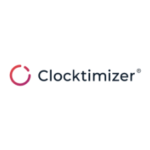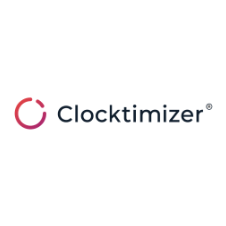Clocktimizer: How to bridge the gap between small and big data
Using data in decision making is as much about evaluation and sharing, as it is about collection. As anyone who has spent more than five minutes in front of a spreadsheet will tell you, numbers on their own are not exciting. We need graphs, charts and stories about what the data shows to change opinions or inform strategy.
At Clocktimizer, the core of what we do is supporting firms in the journey from raw data, to insights and learning. For this very reason, we recently hosted a webinar on the art of data-driven storytelling. Our CEO Pieter van der Hoeven was joined by: Jessica Davis, Director of Matter Performance and Service Innovation at McCarter & English; and Anthony Widdop, Global Director of LPM at Shearman & Sterling.
For those who were unable to attend this incredibly informative webinar, we have put together a wrap up of the best bits, tips and advice from our panellists.
Small data vs big data
We’ve all heard of big data. The driving force behind the world’s largest tech companies, and the reason our mobile phones are constantly asking for everything from location data to voice recording permissions. But what is small data? Particularly within a law firm context?
For Anthony, small data is about humans, and conversations with humans. Data that is unique and not easily replicable across giant spreadsheets. Storytelling becomes essential in bridging that gap between small data and big data in firms. Often you want to use data to motivate action, or inform a client’s choices. Combining big and small data helps to drive changes in behaviour, by creating a compelling narrative.
For Jessica, small data is one of the key ways that humans process data. Accordingly, why would we try to work against those instincts when presenting data to clients? Key in making storytelling successful, is to work collaboratively. At McCarter, that begins with your approach. When presenting information, present it in a way that recognises that this is a starting point, and not a definitive truth. Try to also share the reasons and motivations behind your data collection.
Storytelling advice for tough audiences
For our panellists, there are a few key things you must take into any tough conversation:
- Learn to appreciate criticism – If you can fix it, try to. If you can’t, make peace with that
- Try to identify biases – identify which assumptions they are based on, and get ready to bust some myths! We wrote a blog on different data fallacies to avoid here.
- Understand that you can’t avoid tough conversations – your audience is likely to respect you less if you don’t address the elephant in the room
To illustrate these points, Anthony shared his unique narrative approach to a tough off-site with a lot of senior members of firm management. The off-site was developed to critically evaluate the effectiveness of the teams of those attending. This could have been a contentious weekend for all involved. Cleverly, Anthony and his team spent a lot of time developing a narrative around the types of teams and their ‘shapes’. From the ‘Crown’ team, To the specialised ‘Vase’ team to the unique ‘Bishop’ formation. By reframing the teams as recognisable objects, attendees were able to dive into the narrative and work collaboratively, rather than feeling attacked.
For Jessica, you can take a lot of sting out of an argument by creating a safe environment to share criticism. “Please help me debug this” is a great way of provoking a collaborative approach to problem solving. Equally, making the other person aware that if they really aren’t happy with the fix, then they will not be forced to continue. Often, collaboration is more valuable than execution where change is concerned.
Should we always be storytelling?
In a world where we are all increasingly time-poor, and where research is showing our attention spans to be shorter, is storytelling always the best way to get your message across? For Jessica, storytelling starts the moment you begin selecting the data you present, whether or not you attach a narrative to it.
At Shearman & Sterling, Anthony has been embracing the lessons of the Netflix teaser trailer. There is a time and a place for storytelling. However, when you have sixty seconds to convince someone of your point, storytelling is not the best play. For this reason, Anthony tries to come up with shorter, data driven pitches as ‘teaser trailers’ for the wider problem. The added advantage is that boiling something down to a 60 second pitch is also a good way of evaluating the strength of your argument.
Beyond choosing whether or not to tell a story, it is also essential to evaluate the ethics of your story. As Jessica noted, data is eminently manipulable. Therefore, the act of inviting multiple people to debug or critique your story, you also reduce the ability to manipulate data. The more eyes on a story, the more transparency you offer. Andrew also noted the importance of being very clear about the scope of your data and your hypothesis. In this way you reduce confusion later on.
Forewarned is forearmed
For many in LPM, one of the biggest challenges is in identifying who is likely to be positive and who is likely to be negative. To counteract this, Anthony shared a vital tip about stakeholder mapping.
By plotting out in advance those that have used legal project management efforts within the firm, versus those who have not, you can tailor your approach. In addition to this, Jessica recommends enriching this with information on team members who are likely to be LPM champions. In general, understanding who your stakeholders are and their relative feelings about LPM, gives a broad understanding of how to more effectively roll it out internally.
Our panellists emphasised that this is work that will take time. To ensure that the process is streamlined, Anthony and his team break stakeholders down over four major categories:
- Those that WANT and NEED legal project management
- Those that NEED legal project management but don’t WANT it
- Those that WANT legal project management but don’t NEED it
- Those that neither WANT nor NEED legal project management
Legal project management teams can then prioritise helping the first group. In turn this will create data and champions who can demonstrate the value add of legal project management for other groups.
Storytelling for your clients
Storytelling on the client side is often a case of creating context. Jessica shared the challenge many clients have in understanding the inner workings of firms. Often she is tasked with mapping out firm-side stakeholders and key players in a matter. With this data she can walk a client through and collaborate on delivering the matter in a way they are happy with it. Secondly, Jessica recognises the importance of delivering data which tells a story for a client’s stakeholders. In doing so, you reduce the burden on clients and make it easy for them to story tell on your behalf.
Pieter shared that much of the motivation behind Clocktimizer was the ability to tell shareable stories with clients. By presenting matter data in a digestible, easy-to-understand way, you can involve the client in a conversation. In doing so you deepen the collaboration and strength of your relationship.
Our panellists closing advice
In closing our panellists discussed the importance of making your documents accessible. One in ten men are colourblind, which will make the use of coloured data visualisations challenging. Jessica pointed out that Microsoft has a number of tools to help generate colour schemes for the visually impaired. Additionally, Anthony pointed out how important it is to mix up the way you tell stories, by embracing video, charts and other types of media.
We want to extend a huge thank you to our panellists for sharing such insightful advice about the role of storytelling and data in the modern law firm. To learn more about how Clocktimizer can support you in that task, schedule an online demo below. Finally, keep an eye on our social media for information on upcoming webinars around pricing, LPM and more.



